In this week’s episode, Relando shares an introductory talk he provided on Critical Race Theory as part of a Social Justice Speaker’s Series in April of 2021.
Much has happened since then from increased pushback against Pulitzer Prize-winning Journalist Nikole Hannah-Jones and her work in creating the 1619 Project, to efforts in states to effectively ban the teaching of critical race theory.
These manifestations of white backlash prove the points made in Critical Race Theory, and reinforce the message that “white privilege is the ability to pass laws that prevent everyone from learning history that makes white people feel uncomfortable.” The work continues.
In the talk, Relando touches on dominant narratives, the power of story and counter-narratives, and basic tenets of Critical Race Theory.
Support the podcast by becoming a patron
Other Important Links:
- Blog: notesfromanaspiringhumanitarian.com
- Podcast Website: podcast.notesfromanaspiringhumanitarian.com
- Relando’s Website: relandothompkinsjones.com
- Social Justice Origin Stories Podcast: socialjusticeoriginstories.com
Where to find the podcast:
APPLE PODCASTS | SPOTIFY | GOOGLE PODCASTS | ZENCAST | IHEART RADIO |YOUTUBE | POCKET CASTS | STITCHER | RADIOPUBLIC |TUNEIN |
(or wherever you get your podcasts)
Subscribe
Enter your email address below to subscribe and receive notifications of new episodes by email.
Continue Listening
Transcript:
Dr. Christopher Ledford: Good afternoon, everybody. I hope you are doing well. I want to welcome everyone to our fifth and final event in the spring 2021 social justice speaker series here at bluegrass community and technical college.
This spring we’ve heard timely and critical messages, and most importantly calls to action centering around the legacy of Dr. Martin Luther king mental health in nonwhite communities, allyship for the LGBTQIA+ community and the challenges and injustices faced by nonwhite individuals at the intersection of various genders and orientations.
This afternoon, we have the great privilege of learning about critical race theory from Mr. Relando Thompkins-Jones. Since I first learned about Mr. Thompkins-Jones’ best and important contributions to social justice education, I have found myself immersed. Frankly in his writing and podcasts. Mr. Thompkins-Jones has been a powerful voice to me as a fellow social justice educator, and listening to him, I have been challenged, held to account and become more convicted in my work and my role as an educator and an ally. I’m excited today to introduce him and turn this event over to him. First, on behalf of everyone at BCTC, I want to give a big, BCTC proud, thanks to our office of diversity, equity, and inclusion for arranging these timely and critical discussions for our campus community.
You all have done such an excellent job. I also want to thank Brandon termly, our interim CDO, who extended the opportunity to me to introduce Mr. Thompkins-Jones today. Now at this time, it is finally my great honor to introduce Mr. Relando Thompkins-Jones, as I’ve listened to and read his work. I noticed that Mr. Thompkins-Jones frequently introduces himself as a social justice educator and an aspiring humanitarian.
I certainly agree with those things, but I would like to add that Mr. Thompkins-Jones is a visionary. A visionary is someone who thinks about the future with intelligence or wisdom and who plans and works to achieve that, that goal, that vision, Mr. Thompkins-Jones self describes as someone who desires to help those who are marginalized and who have unequal access and support someone who desires to build equitable and inclusive communities.
He is a visionary and social justice education is the work that he has undertaken to realize that vision. As a proud product of Detroit Mr. Thompkins-Jones went on to pursue his education at Oakland University and the University of Michigan. He has served as the director of social justice education within the division of inclusion and equity at grand valley state university, also in Michigan.
In that role, he oversaw a social justice, resources and programming as well as facilitated educational opportunities. He worked with various college stakeholders to create a social justice education program for all stake holders, including faculty, staff, administration, and students, perhaps most importantly, at least in my opinion, Mr. Thompkins-Jones has promoted this vision from the lectern.
He has taught a number of courses on intergroup dialogue, social justice, and multicultural and inclusive practice in social work. To the point, Mr. Thompkins-Jones is teaching others how to be respectful, professional, and inclusive leaders. He teaches others how to find common ground to build relationships and resolve conflicts.
These are the tools that we all need to learn to use, to tear down walls of inequity, injustice, and prejudice, to borrow a quote from Mr. Thompkins-Jones. If we can change the way we think we can change our actions as well, it is for all of these reasons that Mr. Thompkins-Jones is precisely the voice we need to hear in a discussion of critical race theory, to help us understand our roles and promoting social justice and how we can help move that vision and our own work at this critical time.
Again, it is my great honor to introduce Mr. Relando Thompkins-Jones, social justice educator, aspiring humanitarian and visionary. Thank you, Mr. Thompkins-Jones.
Relando Thompkins-Jones: Okay. All right. Wow. Thank you so much for the introduction Dr. Ledford. I really appreciate the opportunity to be here with you all. We’re going to be talking a little bit about critical race theory.
We’re also going to be talking about narrative and the power of story. And when we get into that, I’m encouraging you all to think about your own examples of how you see critical race theory playing out in your daily lived experiences. I also want to acknowledge that I signed on to be here with you all months ago, and I’ve started and stopped and started and stopped this presentation many times. So, I also, I just want to acknowledge this, like the weight and the heaviness of the recognition that Black lives continued to be under assault. And I also want to acknowledge and affirm that Black lives do matter.
They have mattered, they will continue to matter, and they do even though so many societal messages, even though so much injustice continues to happen we persist Black Lives Matter. I wanted to acknowledge that. So, we will be talking about critical race theory today, and I’m hoping to provide an introductory overview. There are many scholars that have dedicated their life and time to educating, to raising awareness, to showing how critical race theory plays out in real life.
And so today I’m hoping to give and an introductory overview with the encouragement that for folks whom this is new to you, continue to do your own work and research around understanding this. Recognizing also today that depending on what we’re talking about, depending on the subject, the topic, it could be someone’s educational opportunity.
So, this could be something that, you know, hey, I’m, I’m learning a lot of things, perhaps this might be conversation I haven’t had before, while for others. It’s like what’s today, Friday? It’s our Friday at 12 o’clock. So, recognizing who’s in the room and honoring that is going to be important to today as well.
Although there are some images in the presentation, it is mostly text and quotes today talking about critical race theory, talking about the impact of racism and white supremacy with the recognition that for those of us who experience that, we see that over and over and over again, and there’s plenty of information and plenty of stories and imageries out there.
And I want to acknowledge how taxing that can be particularly for Black people and other people of color to experience those things again and again. And so, we’re going to be talking about how critical race theory shows up as well as hopefully inviting you to think as we’re moving about how that shows up in your lived experience as well.
So, a little bit about me social work, social justice education is my background and training. I grew up with a lot of experiences, particularly at the intersection of race and class, that communicated messages to me early on that if you’re Black, you don’t matter if you’re Black and you’re poor, you definitely don’t matter. And so not having a lot of opportunities to really process that there were things that I saw in my lived experience, the messages didn’t always come directly and as explicitly, but there, you know, disparities in resources, those types of things.
A lot of anti-black messages a lot of things connecting, professionalism to appearance that really valued Eurocentric standards and set whiteness as the norm. I found later on like learning about systems of oppression. So, it’s like, wait a minute, like poor people aren’t poor because they’re lazy.
Like, wait, there’s some design that’s put into this, like, wait a minute. Our neighborhoods are designed in a very specific way. Learning later on about redlining and housing segregation. And it’s like, wait, wait a minute. The resources, the divestment from communities, particularly communities of color were designed and intentional.
And so, I’m really paying attention to the, the importance of story and interrogating and being critical as we’re talking about critical race theory, being critical of the narratives that we get and not accepting those things on the face of it, but being really critical about like, who does this benefit?
What, what is the purpose of us accepting this imposed truth as just, that’s just the way it is and who does that benefit and who does that harm those messages? And so, in my educational approach. I am a practitioner, of critical pedagogy. For me, learning about systems of oppression was really liberating.
It took a lot of the weight off and a lot of the blame that individualized problems that were really systemic and, and blame people, particularly people who are experiencing oppression for the oppression they experience. And so, I believe education is a process of empowerment and liberation., it’s a way, to help us make choices that better impact and influence in our world.
I seek to disrupt the effects of oppressive systems, not just in the classroom, but in organizations, in society as a whole. So, every exercise is not just an exercise. It’s an invitation for us to think about, how does this show up in our daily lived experience? What is it that we can do to disrupt those oppressive systems that often go unexamined and unquestioned?
How can we begin to push back? And then I’m also responsive to social contexts and recognizing that power can and should be redistributed based on the needs of the communities that we’re serving. So really have an important focus on this reality that we are all teachers and learners. That shifts the power dynamic, that there was just one knower who was there to impart knowledge, but instead recognizes that lived experience and the power of story is really important and everyone has something to contribute. Other ways that I come to this work, one of the motivating quotes that I continue to carry with me is a quote from Dr. Martin Luther king. And one of the last things he spoke about before he was assassinated, when he talked about having been to the mountain top is this quote that says, “all we say to America is to be true to what you say on paper.”
So, there’s this recognition that there are things written down about what it’s supposed to feel like, what it’s supposed to mean to be able to fully participate as a member of community. So king was talking about the nation, also talked about as a global community and there’s this recognition that there were things, and there are things that were said, rights that were said to be for everybody. And the clearly were not. So. In this quote, king is addressing the contradiction between what’s said and how that’s actually played out. And one way that I come to the work is trying to reduce lessen, ultimately eliminate that distance between who we say we are as communities, as organizations, because, you know, universities, schools, organizations various institutions are smaller pieces of a larger whole, and each of those things, I mean, even in our own our own university here, those amongst us in this virtual space, you know, there are things that are written down about what it’s supposed to mean to be a part of this community, how people are supposed to feel and like many other aspects of society not everybody experiences the fullness of that.
And so, as king highlighted that contradiction in my work, I seek to do that as well. And not just to highlight it, but then also to talk about, how can we do something about that? How can we address it in a meaningful way? Another quote that I’m motivated by and is, and is very, very timely for me and I’m sure many rights now is James Baldwin’s quote that says to be a Negro in this country and to be relatively conscious is to be in a state of rage almost all the time. So, Baldwin would say that that rage isn’t just about what’s happening to us as Black people in this country, but it’s also because of the ignorance and criminal indifference on the part of white people to understand, to do something about it.
And he talked about that, the work. Is to channel that rage so that it does not destroy you. And so, for me, social justice education working towards social justice and in collaboration with others, it’s a way for me to channel the rage that I have so that it doesn’t destroy me. And when I’m working with Black students, Black participants other folks of color my goal is to support and be supported in channeling that rage so that it does not consume us so that it does not destroy us. And when I think about those privileged aspects of our identities are I’m working with white participants, white students’ white people in organizations like, how are you criminally indifferent? How are you ignorant or criminally indifferent to the lived experiences, the plight, the oppression that people of color experience, and then thinking about our other identities that they carry some privilege as well.
Like how are we ignorant and criminally indifferent and how can we do something about that? How can we change that? I’m really big on story and socialization. So, I often refer to the ways that we’re socialized. Each of us have been given information that isn’t correct.
Some of the messages we receive, depending on our identity can assert that we are a superior in some ways. And some of the messages that we get can assert that we are inferior. And so those messages are reinforced in a variety of different ways, but there are also opportunities to, to interrupt them.
And so, when I’m saying I believe education can be a process for empowerment and liberation, it’s really about recognizing we’ve learned some things that are incorrect. You know, no. white people are not superior. No, you are not the best at everything. No, you are not, more deserving than another.
And then also Black people and other people of color, like, no, we are not inferior, social justice education is a process of naming those things. And I also believe in the power of counter narratives as well that pushed back against that.
So, when we’re thinking about critical race theory, before we get into that, one of the foundational things I’d like to talk about is the way that difference is used. And then also a term that some folks use cultural hegemony, another way to think about that is dominant narratives.
And so, when thinking about difference and how difference is used, I want you all to think about how dominant groups use difference to explain and maintain the privileges that they have while at the same time, denying that there are any differences that exist at all. So different can be used to explain why things are the way they are, why groups have different status while at the same time saying, but you know what, though, the rules are fair for everybody.
We all have the same opportunities. And so, difference can be weaponized in that way. And so, acknowledging that when we think about critical race theory is whereas we’re getting to that point difference can be weaponized in that way to explain away oppression to explain away disparities, to explain away racism and other forms of marginalization while at the same time saying, but everyone has the same opportunity as we have the same time in every day. And what you do with it is up to you as a way to individualize problems that are really systemic. And then there’s cultural hegemony. And what that is, is the control of a culturally diverse society by dominant groups, maintained through manipulating the culture, beliefs, the explanations of how things came to be.
So that the dominant groups, worldview is imposed as the societal norm, which is then widespread and perceived as valid and perceived as beneficial. So here here’s how our society came to be. this is what happened in history. It’s beneficial for everybody to understand that America started at this point in America is here now. These are the heroes. These are the great figures. And it’s really beneficial that everybody understands this so we’re all in agreement about what happened. Well, in reality, those narratives, what they really do is only benefit the dominant group and power has a lot to do with the ways difference can be weaponized as well as hegemony those dominant messages that are often unexamined and taken for granted.
So, here’s some examples thinking about cultural hegemony, like control of the messaging around how things came to be in ways that are asserted to be beneficial for everybody. And, you know, sometimes people are even tested on this information when we think about education and that sort of thing.
So, we can’t talk about hegemony without talking about power. One example. It’s a page out of a textbook, the title of the page says moving out. And the caption below says when the European settlers arrived, they needed land to live on. The first nations peoples agreed to move to different areas, to make room for the new settlements.
So, think about the way in which that story is told the first nations people agreed to move to different areas, to make room for the new settlements. Now I’m hoping that many of us know that this is not an accurate depiction of what actually happened when we think about displacement. When we think about genocide, colonization, when we think about the ways in which the people who were here first were treated and historically, and then the legacy of that, the ways that that continues,
Thinking about cultural hegemony, the messages, the storytelling, it has a lot to do with power. So now it’s in a textbook. Now kids are learning these things. And when I think about things like standardized testing sometimes folks are tested on this kind of information. This is it’s beneficial that you know that this is how the country came to be.
This is the early history. This is what happened. What’s the impact? I’m asking you to think about like, what’s the impact of internalizing this message saying that first nations people agreed to move as opposed to what actually happened, right? It’s a way that benefits the dominant group.
And in this instance, it benefits whiteness. It benefits white people in that history of that storytelling. “No violence, then, you know, no, they, they agreed to move.”
Another quote, “the Indians are so naive and so free with their possessions that no one who has not witnessed them would believe it. When you ask for something, they have, they never say no. To the contrary. They offer to share with anyone. They would make fine servants. With 50 men. We could subjugate them and make them do whatever we want.”
And that is a quote from Christopher Columbus, who is often touted as a very important figure in a very heroic way oftentimes. Here’s another quote. And so, this is just paying attention and I want you to think about your own educational experience too. In terms of, have you heard these, types of quotes before, and then if not, just think about, why that might be? What’s the reasoning behind that?
Other examples. Cause it doesn’t always have to be things that are written down. It can also be things that are just in the different types of media that we consume. So, this is a children’s workbook here for helping with, practicing learning how to write and you see happy and proud, and then you see sad and angry here.
The more positive attributes are under the folks in the picture that have the lighter skin, I would even say white skin. And over here, sad, angry that popped balloon and angry are attributed to, the children in the illustration that have brown skin, it could be read as black children or children of color.
And so just thinking about like the subtle ways that the anti-blackness like the subtle ways it’s incorporated into the things that we do, which is connected to critical race theory as well. Over here is just a caption from a map that says, “the Atlantic slave trade between the 15 hundred and 18 hundred brought millions of workers from Africa to the Southern United States to work on agricultural plantations.”
So, the power to reframe and the power to change the language in a way that again, is asserted that it’s supposed to be beneficial for everyone, but in reality, it really serves to only benefit whiteness and white people here.
Another quote “I advance, therefore, as a suspicion, only that the Blacks, whether originally a distinct race or made distinct by time and circumstances are inferior to the whites of both body and mind.” That is a quote from Thomas Jefferson, who is another figure that is widely celebrated as this bold and pioneering and heroic figure.
We’re continuing to think about the power to tell the story. Have you heard that quote from Jefferson before and your educational experience or others that I’ve shared here so far, just thinking about that, is this your first time hearing these quotes from Jefferson and Columbus so far?
Another quote “I will say then that I am not and would not nor have ever been in favor of bringing about in any way, the social and political equality of the white and Black races that I am not nor have ever been in favor of making voters or jurors of Negroes, nor of qualifying them to hold office. Nor to intermarry with white people.
And I will say that in addition to this, that there is a physical difference between white and Black races, which I believe will forever forbid the two races from living together on terms of social and political equality. And in as much as they cannot so live while they do remain together, there must be a position of superior and inferior. And I, as much as any other man, I’m in favor of having the superior position assigned to the white race.”
Quoted from Abraham Lincoln, who was also another, heavily memorialized idealized figure in American history.
So critical race theory, acknowledges historical erasure and erasure is really about not knowing the true history of racism and white supremacy in the country. You know, just thinking about your own experiences that I’ve been asking before, as we are continuing to move here, how much are you affected by erasure when it comes to understanding issues of race and racism? Thinking about your K through 12 educational experience what have you learned in terms of American history?
What have you learned in terms of the contributions of people of color in society? What have your neighborhoods looked like? What do your friend groups look like, what do you, you know, your leadership team, your organizations look like? And how are we, able to connect a through line between the past and the present when it comes to this erasure?
Thinking about hegemony, the control of the narrative, being able to control that there are things that go into that, including power. So, this belief in superiority. So, in order for these dominant messages to persist there has to be the belief in superiority. Whiteness and lighter skin being seen as the standard. Folks who have English as their first language, that being heavily valued in our society, as opposed to folks for whom English is not their first language.
All these subtle messages and the way they’re reinforced, not just in television movies, things that we consume, but then also patterns, think about education, healthcare, variety of other things, but there’s this belief in superiority. One of the things that I do think about sometimes when I listen to folks talk about what’s “the good part of town” whether I’m local or whether I’m traveling, what are good school districts?
What does that mean? And usually when I’m hearing those good parts of town, mostly coincide with areas that are mostly white, similar as school districts. And so, this belief in superiority that whiteness is superior. It’s desirable. And then, coming with that is the belief in the inferiority of others.
Dark skin not being valued. Again, folks for whom English, isn’t their first language not being valued. And lived experience in a variety of other areas too. And not only that, but then the power to impose those standards. So, belief that a group is superior accompanied by, you know, if a group is superior to other groups must be inferior.
And then the power to impose those standards that comes with being able to push those dominant narratives in ways that, the society then can support those dominant narratives. So, when I talked about some of the experiences that I remember having. Really young. I remember I used to run track in high school, and I can remember starting from the community that I lived in, and I would run down this particular intersection that I have in my mind right now, the further away I would run from where I grew up, I would notice that the landscape would change.
So, the houses would get bigger manicured, lawns, you know, less potholes, that sort of thing. Two, three car garages lots of greenery, different resources in the community. But since I didn’t live there, I would have to turn back. And so, there was something for me about running away from the community that I was in and seeing that increase and then having to turn back around and seeing the landscape change and I’m combining that with messages about, socioeconomic status about race that literally like blame people for the oppression that they experienced for the divestment, from their communities that they experienced. And so, the power to impose those standards is a very real thing.
Thinking about the history of redlining, housing segregation. I also think about when it comes to things like professionalism and particularly in this moment, I’m thinking of my own. Lived experiences. But this idea that, wearing my hair locked is unprofessional, you know, narratives that say, you’re not going to get a job like that.
That’s not professional. These messages that while speaking to my own experience I received rooted in anti-blackness rooted in white supremacy and some places can still, and in many states, I know some states have been passing bills where you can’t discriminate against folks based on their hair.
But in many places, that’s not yet a reality. And so, this idea that “we are the standard, and if you are going to be with us, work with us, you will have to deny, you will have to erase some part of yourself in order to do that.” So, the power to impose standards. As I’m sharing just a couple of examples in my own lived experience.
I’m hoping that you all are also thinking about how that power to impose standards plays out in your life as well.
And then it manifests in institutions. Another way to reinforce the message. Think about how racial disparities play out in education and healthcare and economics in a variety of different ways on the surface of that, it can be really easy again, to blame people for the marginalization.
You can see that pattern and say, “look, it’s your fault.” So critical race theory really interrupts that and really interrogates that. And then there’s this last piece here about it being invisible in that it’s so deeply embedded that it often goes unexamined, unquestioned. And so. Zooming out for just one moment there you know; those dominant messages exist within a variety of different identities and experiences.
So, this is one example of a model that is out there. There is a non-exhaustive list of, of identities at the very center of this circle, you see power. And the idea is that that’s where the power lies. Those aspects of identity are often centered in experiences. And the further you go out, the further you get to the, the margins, the further folks are pushed out again, not because those aspects of our identities are literally inferior, but because there’s power there there’s power to impose this standard of, ” I am the standard.
Our group is the standard. And we’re going to make sure that that’s reinforced in institutions” better health outcomes, better access to education and wealth opportunities better, prospects and a variety of different ways. And so, as you’re taking a look at this, I’m also hoping that you’re thinking about, how might you be able to see yourself in this?
So, I said zooming out a little bit because there are aspects of our identities where we have some privilege and there are also aspects of our identities where we’re marginalized. And so just thinking about, what your relationship is to that. One of the things that can be helpful is introducing those counter narratives and naming them.
So. When I introduce myself and I share my pronouns, it’s an acknowledgement that rather than unquestioning and assuming that everyone in the room is cis gender is this recognition that, gender, identity is more expansive than it’s often given the space for. In many communities that are marginalized. Folks have been talking about this for years and years and years. But that’s where the power piece comes in, right? The ability to impose those standards.
And so, the resistance that marginalized communities get in response to that. So, there are other things, that are often assumed too, you know, heterosexuality is often assumed. Christianity is often assumed as well when people refer to God or their religious figures, people with a Christian identity can pretty safely assume in many instances, that folks are referring to their understanding of that.
Right? So, when we think about the wheel of power and privilege here, this is one model and it has some, you know, able able-bodiedness too is often assumed as well. And so, it’s recognizing that those dominant narratives of superiority and inferiority are present in a variety of different aspects of identity.
But since we are talking about critical race theory today, we’re really focusing on right now is white supremacy and it’s a political, economic and cultural system or whites overwhelmingly control, power and material resources consciously and unconscious. And those ideas of white superiority in our entitlement are widespread.
And when it comes to relations of white dominance and nonwhite subordination, they’re daily reenacted across a broad away array, excuse me, of institutions and social settings. So, there are daily instances and messages of white supremacy that attests to the assertion that whiteness is Supreme, that whiteness is deserving of, being recognized as fully human and seeing that getting played out over and over and over again
In my opening, acknowledgements of the heaviness of the toll that this takes on Black people I’m thinking about several of the cases, that are happening right now. As I said earlier, I started this, I stopped it. I started it again. I stopped it. It’s like you can’t, it’s hard to keep up with all of the messages particularly when I’m thinking about police brutality that Black life can just be taken with impunity, with no consequence, no accountability.
And so, seeing that being played out over and over and over again seeing how Black victims who are murdered are not. Humanized in the ways that white murderers, white mass shooters are humanized you know, this recognition that if something were to happen to me, it would be, on the folks that I love and care about to prove, why I deserved to survive, that encounter and seeing that played out again and again, and again and again looking into Black victims, past history to try to justify their murders.
When seeing white murderers, looking into their backstory and thinking about the potential. Where did they go wrong in their individual path, right? It’s a deviation from the norm. What, went wrong with this person? This person needs help those sorts of things, humanized in ways that Black people have no access to when we are victims.
And so, seeing that played out again and again, and again, it takes a toll. Seeing disparities in health outcomes and education. Organizationally thinking about who gets promoted? Who’s in leadership? Who has seats at the table? Seeing this play out, again and again, and again, It really takes a toll, but that is the goal though, to assert that whiteness is Supreme, not only in messaging and not only from an individual standpoint, but to make sure that in organizations and different institutions, that the pattern continues to play out where white folks are doing better than everyone else, making it easier to say, “Hey, let’s look at it on the face of that.
Maybe they are a better.” When in reality, we know, that’s not true. That’s not true.
So, when thinking about critical race theory and how it interrogates those dominant messages, it’s defined in a few ways here. So, a quote from Kimberle’ Crenshaw, one of the founding scholars of critical race theory says that it’s “a practice of seeing how the fiction of race has been transformed into concrete racial inequities.”
The idea of race is a social construction. Yes, but it has some very real consequences. So, Crenshaw called it “an approach to grappling with a history of white supremacy that rejects this belief that what’s in the past is in the past, and that the laws and systems that grow from the past are disconnected from it.”
There’s a through line between what happened in the past and what’s happening, what we’re experiencing and witnessing even today in this moment. John Powell said “what critical race theory has done is to lift up the racial gaze of America.
It doesn’t stay within law “though. It started in, in looking at the examining like white supremacy, in the law and understanding how that shows up. “It basically says, look critically at any text or perspective and try to understand different perspectives that are sometimes drowned out.”
It examines how institutional racism manifests in structures.
I’ve named at least a few of these so far and thinking about environmental racism as well. What communities are deemed expendable when it comes to allowing environmental disasters to take place? Lots of things happen in communities of color that would not be allowed in communities that are white and with the legal system undergirding all of these practices.
So, there are tenets to critical race theory, and one of them is that racism is a normal part of American life. Normal in that, it is so normalized.
It is so embedded individually institutionally on conscious and unconscious levels. And it creates disparate impacts. So, name any institution. That’s one of the reasons why in my work, I often lead with race because race continues to be at the forefront of disparities and oppression across a variety of different aspects of lived experience and sectors.
The centrality of white supremacy and racism as a function of that continues to be a foundational piece for understanding oppression and how it shows up. So, racism is, is it’s a normal part of American life. And it’s it’s normalized police brutality. Normalized. Those health disparities are normalized in that the institutions have not moved to do something about it and recognize it as a problem.
It’s just like, hey, that’s just the way it is, you know. That’s just the way it is. It’s, that meritocracy messaging, we all have this ability to make choices and people choose different things. So, critical race theory challenges that, and acknowledges that racism is a normal part of American life.
It challenges and rejects those dominant narratives and ideology. And it reveals how they’re really just there to justify oppression. So, changes or claims of neutrality. In my educational approach, I am not a neutral educator. I am not a both sides educator.
I’m an educator that acknowledges power dynamics within multiple lived experiences. And so critical race theory, challenges, this claim that there’s just a neutral story. That there’s a story of how things came to be that is absent of any power dynamics or any intentional steering and changing of the story to benefit folks in power. Also challenges, objectivity, and this idea of colorblindness that we can somehow solve racism by, not recognizing race and it challenges meritocracy to. Do we really all have the same 24 hours in every day?
Do we really all start off with the same opportunities? No, no, we don’t. And it challenges this idea that racism is an individual issue and that systemic. Which is one of the pitfalls of really understanding the impact of racism that it has to be individual and not systemic, that it has to be, conscious, you have to be aware of it so critical race theory really challenges that idea, which again, is used as a way to just justify oppression.
“It’s an individual thing. That’s behavior between people it’s not manifested in institutions” it’s that sort of thing. And then it also challenges the belief that you can fight racism without being intersectional. So again, recognizing that in a variety of different aspects of lived experience and how white supremacy interacts with other systems of oppression, it’s really important to acknowledge how important being intersectional is, and then honors the lived experience and knowledge of people of color as well.
I was talking about this the other day on one of my own podcast episodes, but the anger that people of color experience is legitimate, and it is crucial to analyzing and understanding racial inequity, the people for whom systems often fail or succeed, depending on how we’re approaching that know a whole lot more about what’s actually happening and what needs to change.
So lived experience is legitimate. Critical race theory acknowledges that and honors that. It challenges cultural deficit models that that that vilify people of color for not Mimicking standards of whiteness, it challenges, deficit thinking, and then the gaslighting that comes with addressing whiteness.
So instead of, being met with those responses of, ” did that really happen” or having to do what I’ve heard, at least along my journey called racial calculus of having to examine and do all these different, thought equations in your head. Did I just experience what I experienced that that just happened was that person really do that?
Did I really not get that promotion? Do I really see that, all the folks who are depicted here in my educational experience are like I’m not seeing those contributions, even though they are, there? So instead of having your reality questioned critical race theory acknowledges that nope, what you’re experiencing and you’re feeling is real as a person of color.
And you have a grasp of how the world, how society actually is. So, it’s not you who needs to change its society, who needs to change. And it recognizes the necessity of those counter narratives and acknowledges revisionist history. So, history is, is told through the perspectives of the powerful there’s an African proverb that says until the lion has its historian, the hunter will always be the hero.
And it’s this idea that history is told through the perspectives of those in power for the benefit of explaining that ” Nope, we didn’t gain this, you know, of ill means this is all happened because it was supposed to, and this storytelling is objective. We’re not biased in any way, and you should accept that.”
So critical race theory acknowledges that history has been and continues to be revised and it replaces those comfortable, more palliative narratives with accuracy, listening to the voices of people who experience the other side of, I believe what professor, Eddie Glaude would say, ” the myths and the legends” about America. There was a clip that’s out there. In which he said, something to the effect of ” I’m a part of a tradition that didn’t buy into the myths because we bore the brunt of them.” So, this story about America being this prosperous free place, recognizing that within that public story, people of color have experienced a very different history.
And so critical race theory seeks to replace those comfortable narratives that often go unquestioned and unexamined. And again, I’m going to continue to point to the educational inequity that folks are tested on this false information in many instances and replaces those narratives with accuracy.
Lastly critical race theory recognizes interest convergence.
So, it’s found in this premise that people of color’s, interests in achieving racial equity advances to the degree that those interests converge with those of white people. It asserts that racism persists, and those advances have progressed slowly because of insufficient interest convergence of the white power structure.
And rather than responding to a way that supports racial inequity. If we look at the long arc of history, often advancements that move towards racial equity were met from whiteness with violence. Responded to by whiteness through violence, on communities of color.
We can draw historical through line through the taking of the Capitol on January 6th. Through events in past history where there was some movement, the idea, the thought that people of color could have more influence, more access is often met with violence.
We look historically. And so, this aspect of critical race theory is also very important, to recognize and to name too. And so, it presents an opportunity to think about, particularly for white people. What are you doing? What are you doing to advance racial equity?
What are you doing to interrupt whiteness? What are you doing? Because the system cannot fail those that it was designed to protect. So, do you value justice more than privilege? It’s a question that is very important. Particularly for white people to answer on an individual level, but then also institutionally with the influence that you have.
In closing here, I’m gonna just share a few things. A couple of quotes from some friends of mine, of the national equity project. They do work around liberatory design. I spent some time with some of them a couple of years ago, I think at this point, participating in a liberatory design, workshop, learning a little bit more about it.
And one of the premises was history is a series of design decisions. So. All systems produce what they are designed to produce. So, it’s like there aren’t any accidents here. If you see disparities if you’re uncomfortable as a in this instance, we’re talking about critical race theory. If you’re uncomfortable as a person of color in your organizational or work environment, it is because that environment was designed to produce that outcome.
And so, with no intervention with no acknowledgement, that, that discomfort, that, that marginalization you experience is by design, that allows white supremacy to go unquestioned. And when I say that allows white supremacy to go unquestioned, I’m not saying particularly for folks of color who are listening, that it’s on you to do that.
And then, if you’re still feeling uncomfortable that you have somehow allowed that. I mean and talking about the overarching messages and the way white supremacy is reinforced. It is often unquestioned and unexamined. And so, this is an invitation to recognize history and think about it from voting, to education, to a variety of different things.
Looking across history, it’s a series of design decisions. All systems are designed to produce what they’re designed to produce. And there aren’t any accidents here. Everything is by design and we’re all designers too. So, this is a recognition and an ask, for those of you who are listening to think about your spheres of influence, to think about the ways you see design in the different aspects of your lived experience, the different aspects of the work that you’re doing, and how can you, how can we work to disrupt that, work, to design something different?
Dr. Christopher Ledford: Wow. Thank you so much for your powerful and thought-provoking words.
I think I speak for us all that you have an important and forceful voice and that you’ve challenged us, held us to account and help us better to understand our roles in promoting social justice. Again, you are a visionary and I appreciate the important work that you do on behalf of that vision. And to answer the questions that you asked about what I value and what I will do with this information, you’ve made me uncomfortable. And I thank you for that. Your words have convicted and rejuvenated me as an educator and an ally. And I thank you for that. I hope that we can have you back sometime, and that you’ll keep us in mind if you’re ever in Kentucky. Thank you
Thanks again for choosing the notes from an aspiring humanitarian podcast. I look forward to engaging with you in the next episode.
Relando Thompkins-Jones: Thank you for listening. If you’ve enjoyed this episode, make sure to leave a review and subscribe wherever you get your podcasts. To find show notes for this and additional episodes, visit podcast.notesfromanaspiringhumanitarian.com. Notes from an Aspiring Humanitarian is a labor of love and will continue to be. Consider supporting the work of notes from an aspiring humanitarian by becoming a monthly patron, your contributions will help keep this resource alive and support its mission.
Visit patreon.com/NAHblog to learn more and make a contribution of 3, 5, 10, or $20 per. Again, that’s patreon.com/NAHblog. You can start or stop anytime. Thank you for joining me this week.
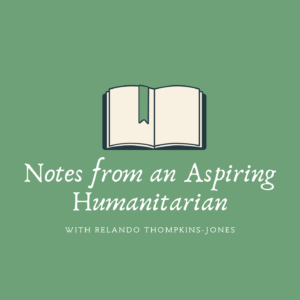
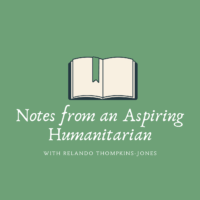
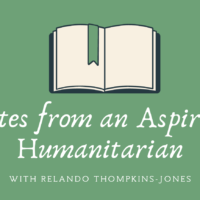
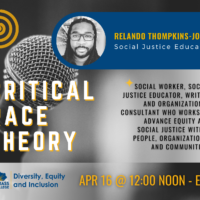
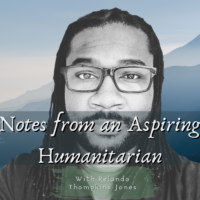

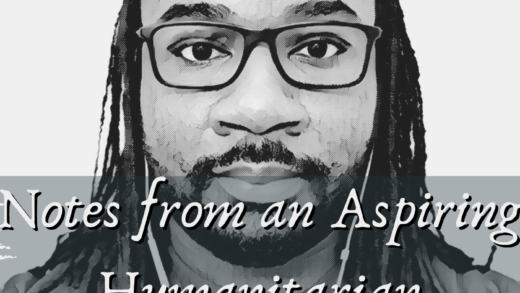
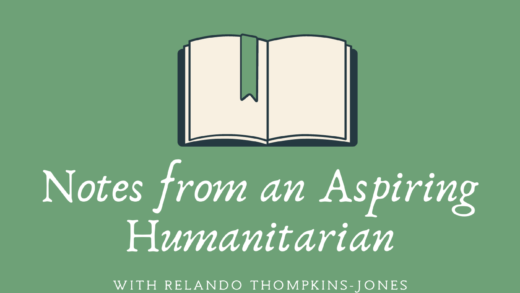
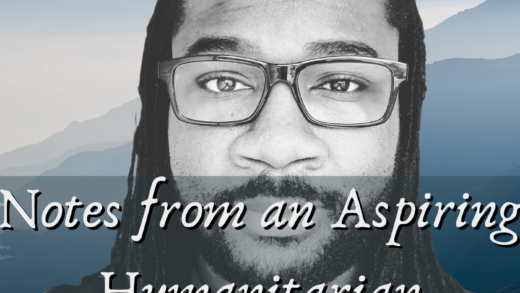

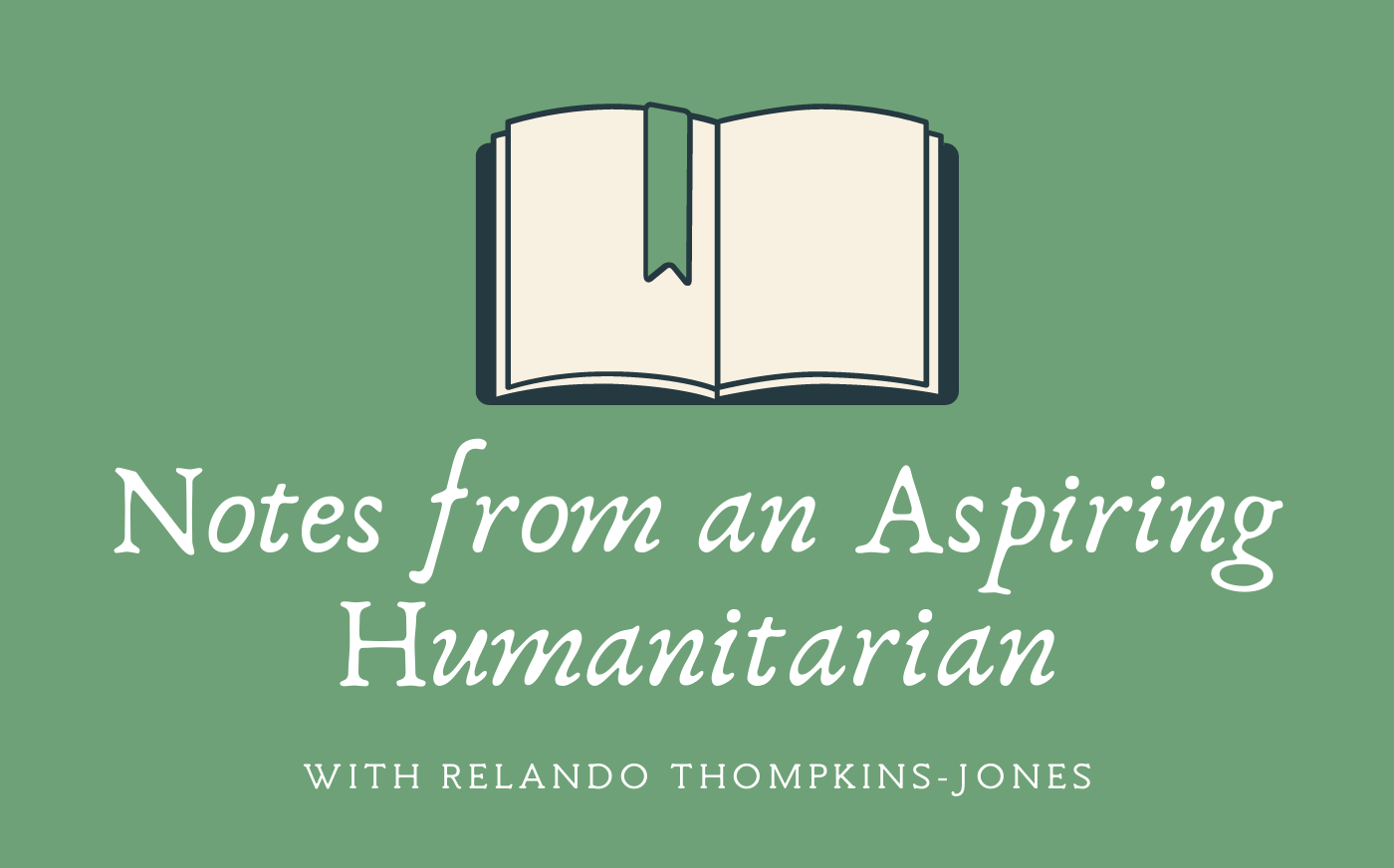
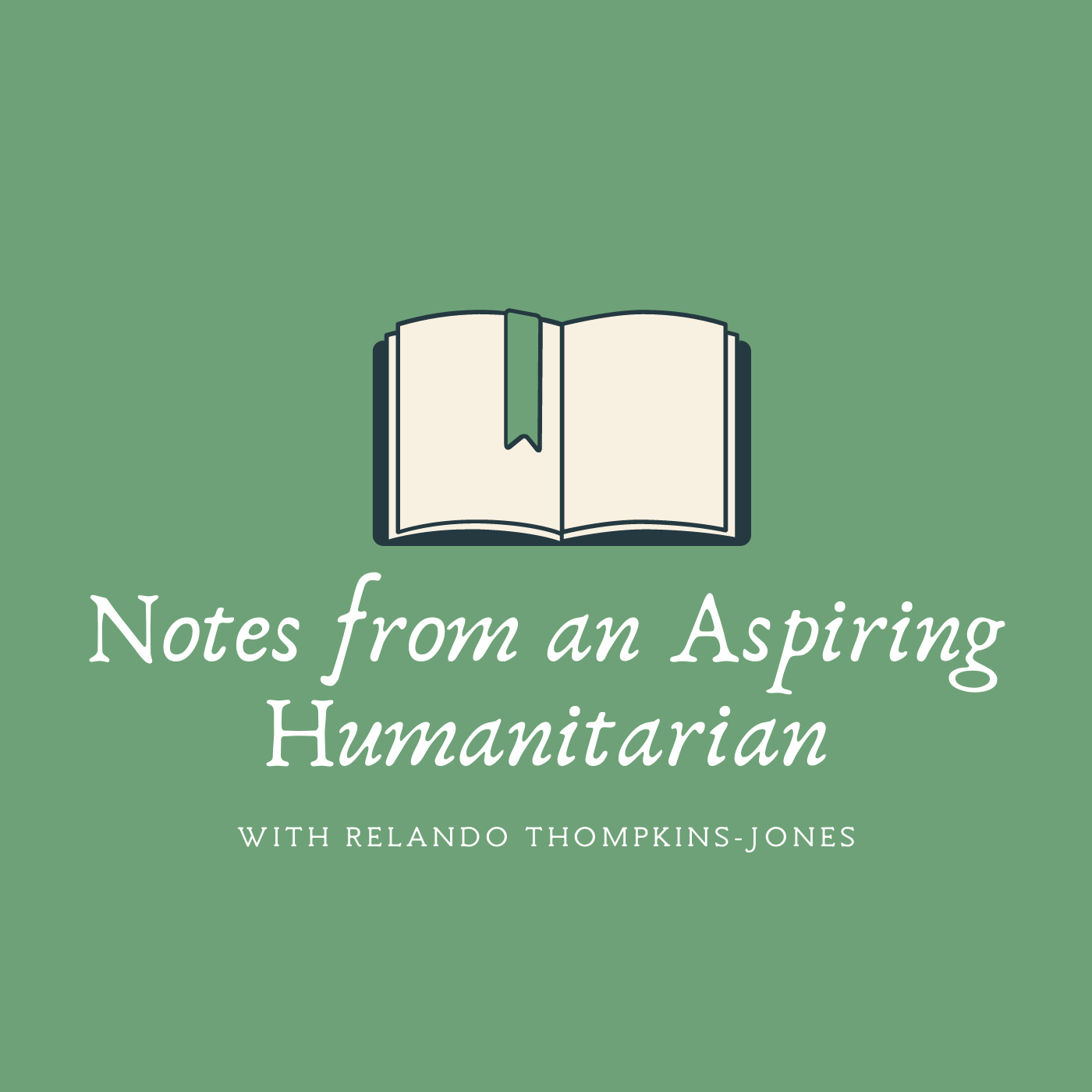
2 Responses
[…] Visit the show notes post for this episode on the Notes from an Aspiring Humanitarian podcast website for a video version and full transcript. […]
[…] Visit the show notes post for this episode on the Notes from an Aspiring Humanitarian podcast website for a full transcript. […]